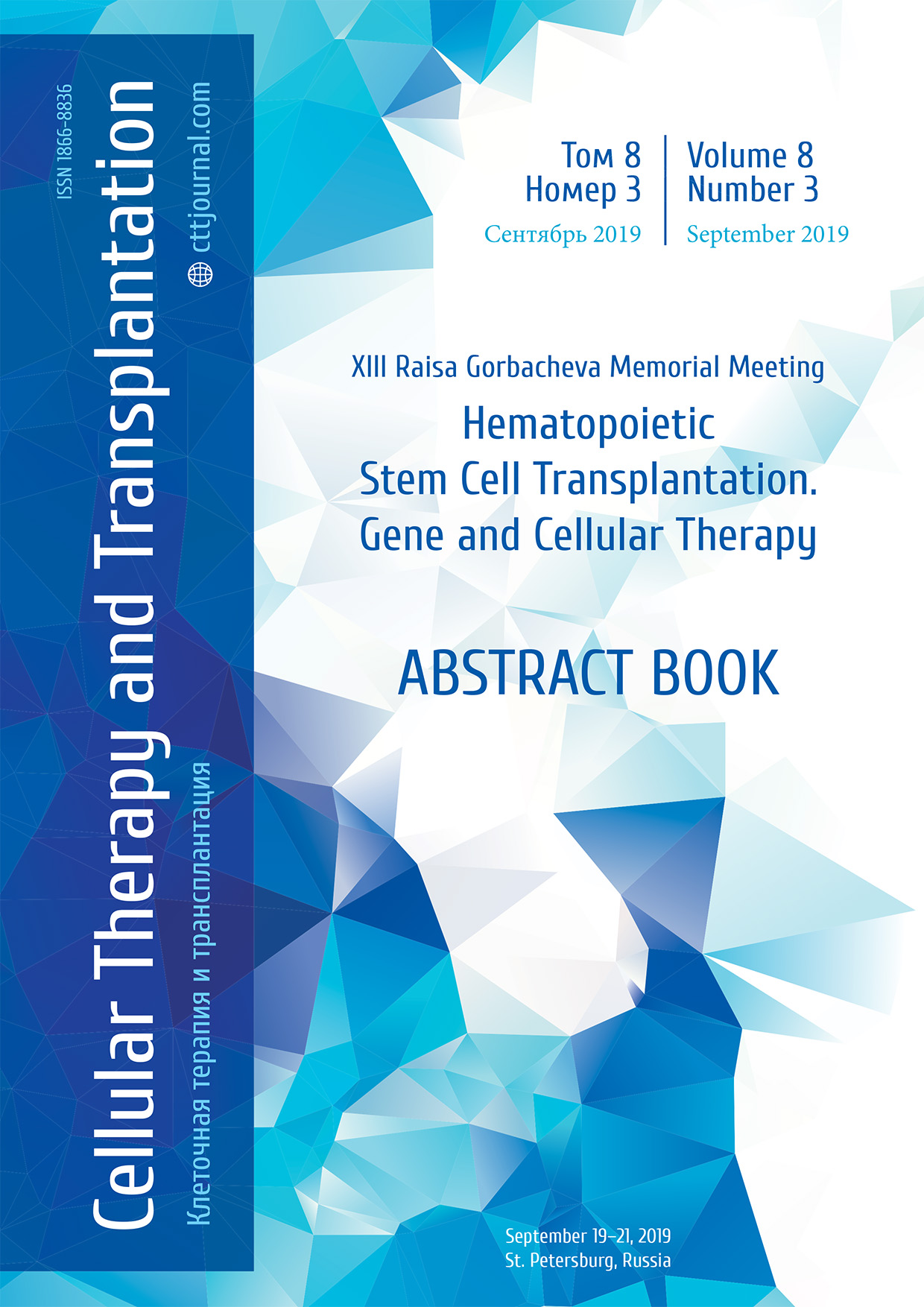High-dose chemotherapy (HDCT) with allogeneic hemopoietic stem cell transplantation (allo-HSCT) in very high-risk patients with neuroblastoma and Ewing sarcoma family tumors: experience of R. Gorbacheva Memorial Institute for Pediatric Oncology, Hematology and Transplantation
Ilya V. Kazantsev, Tatiana V. Iukhta, Asmik G. Gevorgian, Polina S. Tolkunova, Andrew V. Kozlov, Daria A. Zvyagintseva, Anton V. Malorodov, Elena V. Morozova, Andrei P. Litvinov, Alexander N. Shvetsov, Polina S. Kuga, Svetlana S. Safonova, Yuri A. Punanov, Ludmila S. Zubarovskaya, Boris V. Afanasyev
Raisa Gorbacheva Memorial Research Institute of Pediatric Oncology, Hematology and Transplantation, Pavlov First Saint Petersburg State Medical University, St. Petersburg, Russia
Contact: Dr. Ilya Kazantsev
Phone: +7 (963) 348 0524
E-mail: Ilya_Kazantsev@inbox.ru
Summary
In spite of a relatively good prognosis of most neuroblastoma (NB) and localized Ewing sarcoma family tumors (ESFT), there is a subgroup of patients with unfavorable biological and clinical features, in which the outcomes are still poor. Patients with several high-risk features together with primary resistance and systemic relapse cases form an “ultrahigh” risk subgroup, in which most currently existing treatment modalities are ineffective. As allogeneic hemopoietic stem cell transplantation (allo-HSCT) and other forms of immune therapy have no cross-resistance mechanisms with chemotherapy it is a potentially effective option in these cases.
Patients and methods
The results in a consecutive cohort of 29 allo-HSCT recipients (23 patients with very high-risk NB and 6 patients with ESFT) were analyzed. The median follow-up was 18 (3-103) months. The indications for allo-HSCT were very high risk of relapse (n=2), primary chemoresistance (n=4) and systemic relapse (n=23). At the moment of allo-HSCT most patients were in complete (n=14) or very good partial remission (n=11), 4 patients had disease stabilization. In most patients (n=26) an allo-HSCT was performed from KIR-mismatched haploidentical family donor. All patients received non-myeloablative fludarabine-based conditioning regiments. In 15 patients transplant modification was used (CD34+ selection, n=3; CD3+19+ depletion, n=10; TCRαβ depletion, n=2), 14 patients received unmodified transplant with post-transplant cyclophosphamide (PTCM). In most cases one or several post-transplant interventions were performed: local control (n=4), combined chemo- and targeted therapy (n=6), donor lymphocyte infusions (n=4), donor NK-cells infusions (n=4) or other forms of immune therapy (n=6).
Results
The 2-year overall (OS) and disease-free survival (DFS) in patients with neuroblastoma were 39% and 21%, accordingly. Most (27 of 29) cases successfully engrafted, 2 patients died of transplant-related complications before engraftment. Ten patients are currently alive, 6 are in complete remission. All ESFT patients died of transplant-related complications (n=2) or disease progression (n=4). All patients with disease stabilization at the time of transplant progressed died shortly after allo-HSCT. The cumulative risk of transplant related death was 14% and death due to complications 67%, accordingly. All patients with long-term response received one or several post-transplant interventions. In spite of a longer median time to engraftment in PTCM group compared to transplant modification group (D+23 vs D+17) there was no statistically significant difference in SO, DFS, relapse or transplant complications rate between these groups.
Conclusion
Allo-HSCT combined with post-transplant therapy may yield prolonged response in some of neuroblastoma patients. The optimal post-transplant therapy regimen is still to be determined. There is still no data in favor of allo-HSCT effectiveness in the small cohort of extreme-risk Ewing sarcoma. The larger study cohort could, perhaps, provide the data on potentially sensitive ESFT patients subgroup.
Keywords
Neuroblastoma, Ewing sarcoma family tumors, ultra-high risk group, primary resistance and relapse, allogeneic hematopoietic stem cell transplantation.


